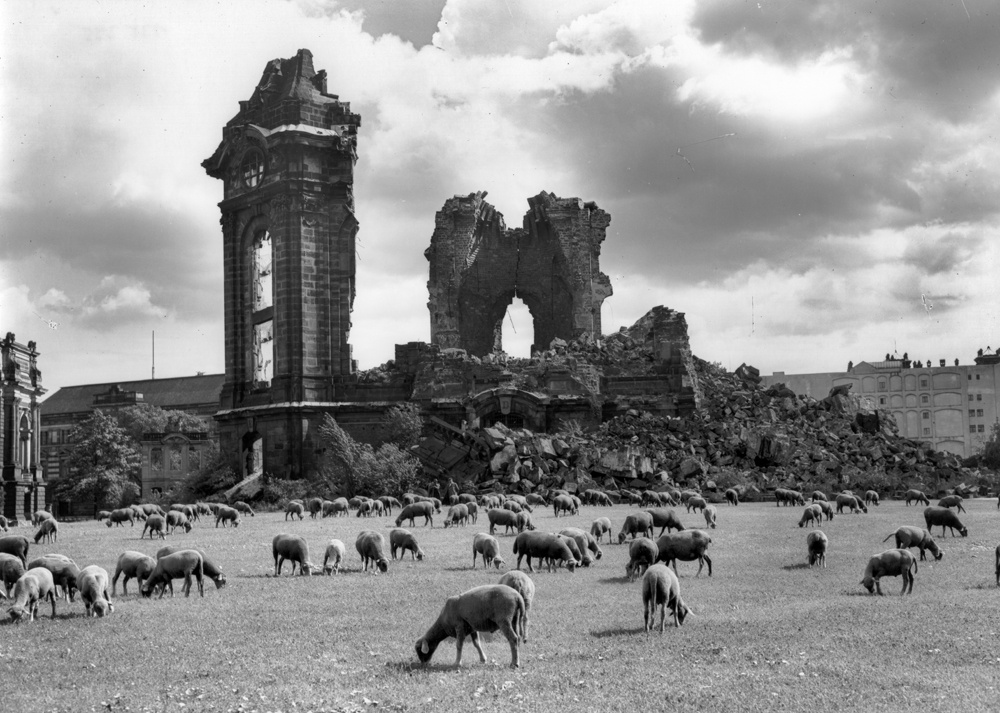Walter Möbius, Ruins of the Frauenkirche with grazing sheep, 1957, SLUB Dresden Deutsche Fotothek.
The violent bombing on the night of 13th February 1945 took its toll on what was once Dresden’s proudest building: the Frauenkirche. Neumarkt square, where it had once stood, was cleared, but the people of Dresden did not want to have the ruins razed to the ground. They preferred to keep a reminder of it in the spaceit had once occupied in the heart of the historic city. Its ruins became the only landmark in this no-man’s land.
This photograph from 1957 shows a strange city centre: a pile of stones surrounding the remains of a wall of the Frauenkirche in a green meadow used as pasture land for sheep. This meadow served as a temporary solution at a time of bitter discussions. In fact, it remained in place for several decades, until the 1990s. In the meantime, inhabitants continued to live their lives in the outskirts of the historic city centre.
During this period, Dresden became a rather unusual tourist destination for barely concealed political reasons: people came to see the collections of paintings and porcelain and to assess the damage caused by the war. The destruction of “Florence on the Elbe” by the Allies was skilfully exploited by the communist regime in its own propaganda war against the West.
Sonia de Puineuf

